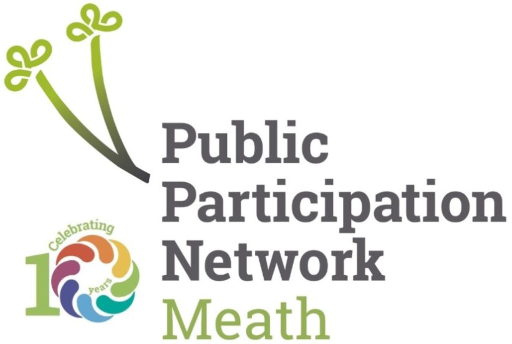All-Ireland Pollinator Plan: Newsletter – August 2025
Comments : 0
 Newsletter: August 2025 The All-Ireland Pollinator Plan is a framework bringing together different sectors across the island of Ireland to create a landscape where pollinators can survive and thrive. Its implementation is coordinated by the National Biodiversity Data Centre. View this email in your browser |
To spot this month: can you find more populations of this rare hoverfly? The Hornet Plumehorn (Volucella zonaria) established in Britain in the 1940s. It was recorded for the first time in Ireland in July 2023 at Churchtown in Co Wexford. It is a very large hoverfly and can be recognised by it’s yellow and black banded abdomen, where the upper band is chestnut in colour. If you think you have spotted it, please take a photograph, and send to us for confirmation. In Britain, Volucella zonaria occurs in a range of habitats, but can be especially frequent in suburban settings with good populations of Common and German Wasps. The larvae develop as scavengers and larval predators in social wasp nests. In Britain, it occurs from May to November, but peaks in August.  Photo: David McAdams. Technical pdf guide to hoverflies in the genus Volucella Submit your hoverfly sightings To do this month: check if your bee hotel is being used Now is the perfect time to check if your bee box has been used this year. These boxes are mainly used by two types of solitary bees – leaf cutter bees and mason bees. Leaf cutter bees cut circular pieces of leaves and use them to line the cells in the nest. The Red Mason Bee lines the cells of its nest with mud. Check if any of the cavities in your next box are closed off with pieces of leaf or with mud. If there are all still empty, it hasn’t been used this year. In that case, it’s worth storing it indoors over winter, and planning to move to a new location next spring. The more flowers there are around your next box, the more likely it is to be found and used. Remember, only a very small number of species use bee hotels. Creating areas of bare soil for mining solitary bees, will potentially help much greater numbers of species.  New blog: Seed mixes – be careful of unintended consequences We’re all familiar with wildflower seed mixes. Bright, colourful seed packets are easy to find in garden centres, supermarkets and online. But these attractive mixes can have unexpected results. In this new blog, Úna FitzPatrick tackles the tricky issue of the unintended consequences of using wildflower seed mixes: “As an ecologist, my heart sinks when I see brown areas that have been sprayed with herbicide in advance of putting down a wildflower seed mix. I know that in most cases, it is done with the intention of wanting to help biodiversity. I also know that between chemicals and seeds, it comes at some expense.”  Read more here Top food for wild bees in August Every year, the National Biodiversity Data Centre receives hundreds of records of bee sightings, which also include information about what the bee was feeding on. This data allows us to see which plants are more popular at different times of year, helping us build a ‘menu’ of favoured food sources for wild bees. In August 2024, Knapweed, Ragwort, Spear Thistle, Lavender, and native Heathers were the most visited food plants. Knapweed was a clear favourite this month, with significantly more sightings of wild bees visiting this plant than the others. Photo: Buff-tailed Bumblebee queen on Knapweed, Ruth Wilson Native Heathers flower in bogs and heaths in late summer, showing the importance of this habitat for pollinators. Lavender is the only non-native plant that made the top five – an excellent choice for gardens to supplement the food supply at this time of year.  Find out more about wild bees’ preferred food plants each month August’s Seeds Feed Next Year’s Bees Long-flowering meadows (one cut and lift a year) are entering an important part of their cycle. Soon, their seeds will drop into the soil and join the seedbank for next year’s meadow. Once developed they are fabulous habitats, bursting with native wildflowers and grasses, and supporting an abundance of life above and below ground. If you have a long-flowering meadow, don’t cut yet. Wait until September; don’t forget to remove the cuttings to reduce soil fertility; and leave some areas totally uncut to help overwintering insects. August’s seeds feed next year’s bees!  Find out more about managing meadows in local communities and gardens in our free guide Collecting Local Wildflower Seed Remember, most meadows will develop on their own, if managed properly. However, it is possible to help them along by collecting small amounts of seed from a native meadow near to you. Seeds from local, naturally-occurring plants are perfectly adapted to your local pollinators, and far better for biodiversity than the mixes you can buy in the shops. Collecting and sowing local wildflower seed can give a boost to your own small meadows, patches or strips. Knapweed seed is a good one to begin with. Knapweed typically continues flowering in August-September and provides enormous amounts of nectar for our insects at a time when they really need it. Remember to harvest sustainably, and always ensure you have the landowner’s permission.  Find out how to harvest and use local wildflower seed with our free guide Keep an eye out for the Great Yellow Bumblebee Our earliest records of the Great Yellow Bumblebee (Bombus distinguendus) are from 1896. It was once widespread across the island but is now in serious decline. It remains our most threatened bumblebee species, and in the last ten years has only been recorded from the Mullet Peninsula in County Mayo and from Inishbofin Island. It’s a late emerging bumblebee, dependent on species-rich grasslands. In the past, it would have been associated with hay meadows. During 2021-22, The Great Yellow Bumblebee EIP (a one-year pilot project), worked with farmers on the Mullet Peninsula and Erris mainland to monitor bee populations and investigate how changes in farmland management could protect this vulnerable species. Since then, monitoring work and farmer engagement has continued under the LIFE on Machair Project. Keep an eye out this month if you’re in suitable habitat as its most often spotted in August. The Great Yellow Bumblebee has a blonde abdomen and two bands of blonde hair on the thorax, separated by a band of black. Photo: Karina Dingerkus.  Submit your bumblebee sightings Can you help by carrying out a 10-minute Flower-Insect Timed Count (FIT Count) FIT Counts are an important way that you can help us monitor pollinators. Download the free FIT Count App, watch a 50x50cm patch of flowers for 10 minutes and count how many insects visit. You can carry out a FIT Count anywhere, and on any flower, but where you can, please use one of our 15 target flowers. In August, it’s especially useful to carry out FIT Counts on Knapweed or Ragwort. In 2024, 784 validated FIT Counts were submitted by 135 different volunteers. The average number of insects per FIT Count was 7. Why not try one where you are to see how your site compares.  Learn more about FIT Counts The National Biodiversity Data Centre also runs a Garden Butterfly Monitoring Scheme The National Biodiversity Data Centre is a Company Limited by Guarantee. Register Number: 730718. National Biodiversity Data Centre, SETU West Campus, Carriganore, Waterford, Ireland, X91PE03 |

